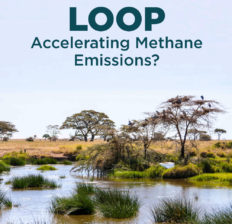This Dr. Axe content is medically reviewed or fact checked to ensure factually accurate information.
With strict editorial sourcing guidelines, we only link to academic research institutions, reputable media sites and, when research is available, medically peer-reviewed studies. Note that the numbers in parentheses (1, 2, etc.) are clickable links to these studies.
The information in our articles is NOT intended to replace a one-on-one relationship with a qualified health care professional and is not intended as medical advice.
This article is based on scientific evidence, written by experts and fact checked by our trained editorial staff. Note that the numbers in parentheses (1, 2, etc.) are clickable links to medically peer-reviewed studies.
Our team includes licensed nutritionists and dietitians, certified health education specialists, as well as certified strength and conditioning specialists, personal trainers and corrective exercise specialists. Our team aims to be not only thorough with its research, but also objective and unbiased.
The information in our articles is NOT intended to replace a one-on-one relationship with a qualified health care professional and is not intended as medical advice.
Feedback Loop Accelerating Methane Emissions
July 29, 2022

Methane is the greenhouse gas that’s thought to be responsible for about one-third of global warming since preindustrial times. Levels of methane in the atmosphere have been rising steadily over the past several decades, especially during the last 10 to 20 years.
This is a major problem considering that methane is the primary contributor to changes in the ozone layer and hazardous air pollution.
While it’s already been established that methane is released in high amounts from fossil fuel production, recently researchers have uncovered that the “methane feedback loop” is worsening the problem.
There’s emerging evidence that microbes found living in tropical wetlands — such as those in East Africa and the Amazon — can trap methane gases, further contributing to rising temps and climate change.
Study Findings: Methane Feedback Loop
What is the methane feedback loop?
The methane feedback loop describes how global warming (rising temperatures) is causing more rain, which is creating more wetlands, which increase methane emissions. This in turn fuels even more global warming and rain, creating a feedback loop that’s destructive to the planet.
How exactly does this work?
Experts believe that microbes living in wetlands are the main source of methane emissions and the reason why wetlands are “hot spots for heat-trapping gas.”
Microbes seem to cause reactions with light carbon that produce methane. With more and more land being devoted to cattle ranching and landfills in the tropics, two areas where microbes accumulate, the problem seems to be getting worse.
What It Means
Is methane a positive feedback loop? It’s considered a “positive” feedback loop in that rain and methane emissions both increase at the same time, but it’s definitely not positive for the planet.
The relationship between increasing wetlands and heightened greenhouse gas emissions is accelerating climate change and worrying many experts.
In fact, it’s believed that East African wetlands may be playing a significant role in unprecedented methane emissions seen over the past two years. It’s expected that a similar pattern is occurring in other tropical wetlands around the world, although other locations haven’t been studied as extensively as those in East Africa/Sudan yet.
Is the methane feedback loop similar to the permafrost feedback loop?
Areas in the Northern Hemisphere are experiencing global warming as part of a vicious cycle known as the permafrost carbon feedback loop. This describes how rising temps are causing permafrost to thaw, which may emit more greenhouse gasses, which further warms the climate and thaws more permafrost.
This is a similar problem to the methane feedback loop, although it’s happening in different parts of the world.
What Can Be Done
It’s still not clear how the methane feedback loop can be resolved in order to help slow climate change.
Experts in climate change don’t believe that draining wetlands or redirecting water via canals would be effective approaches to controlling methane emissions, considering this will cause other types of destruction to the ecosystem, including by increasing carbon dioxide emissions.
While it’s a concerning problem, more than 100 countries that signed the Global Methane Pledge in 2021 may soon help slow methane emissions around the world in other ways. (The goal is to cut emissions by 30% primarily by plugging leaks from oil and gas infrastructure.)
Other potential ways that you and people in your community can help control greenhouse gas emissions include:
- Getting a home energy audit and making adjustments based on your energy company’s recommendations.
- Using renewable energy sources if possible, such as solar panels.
- Composting at home and growing your own produce.
- Driving an electric car.
- Using energy-saving light bulbs.
- Supporting companies that are committed to battling climate change, such as those involved in organic, sustainable farming, regenerative agriculture and alternative energy.
Conclusion
- How is the greenhouse effect a feedback loop? The “methane feedback loop” describes how global warming is causing more rain, which is creating more wetlands, which increase methane emissions.
- This in turn fuels even more global warming and rain, creating a feedback loop that’s destructive to the planet.
- It’s still not clear how this problem can be managed, but scientists are investigating ways to help control methane release into the atmosphere from different sources, including burning of fossil fuels, microbes living in wetlands and cattle ranching.




